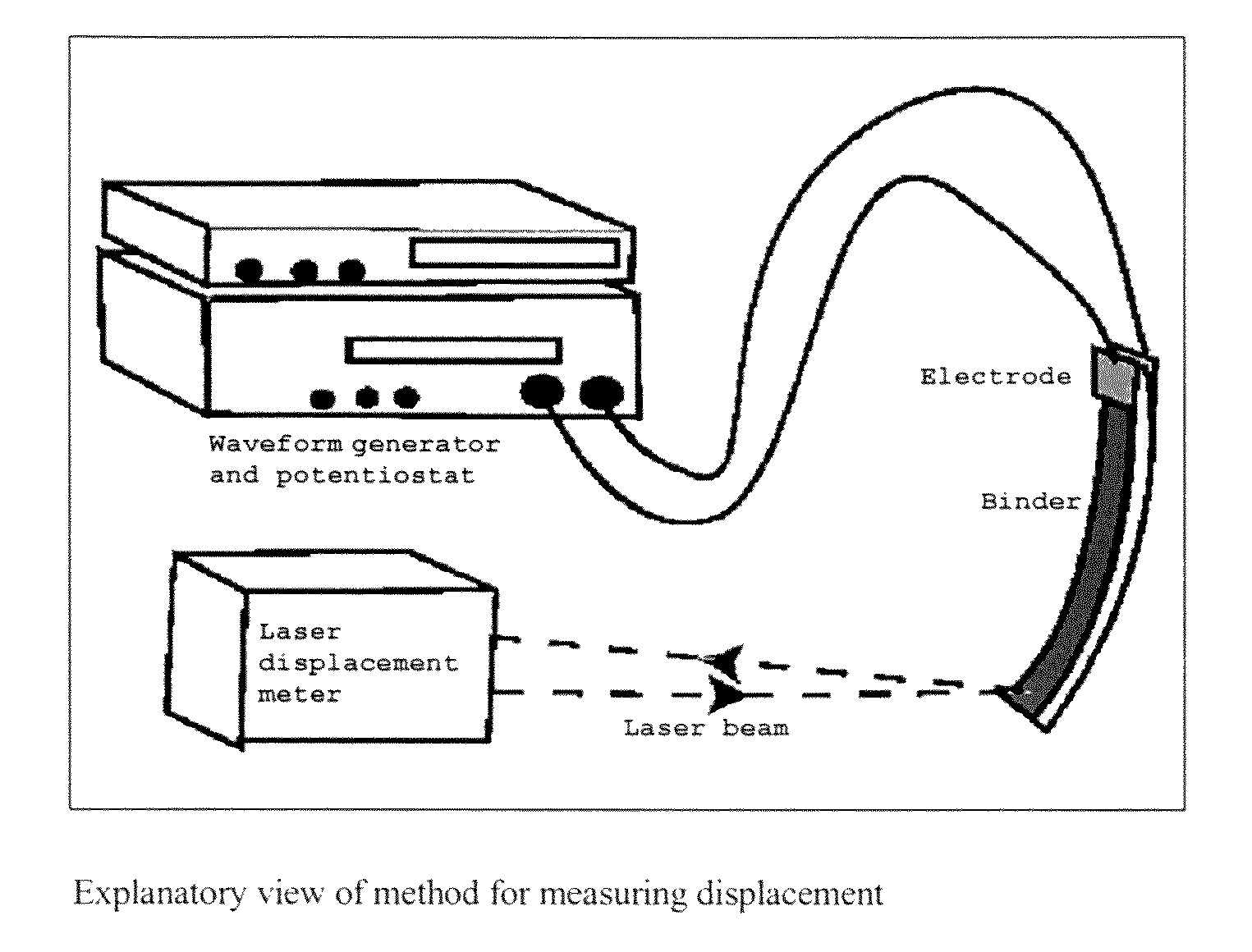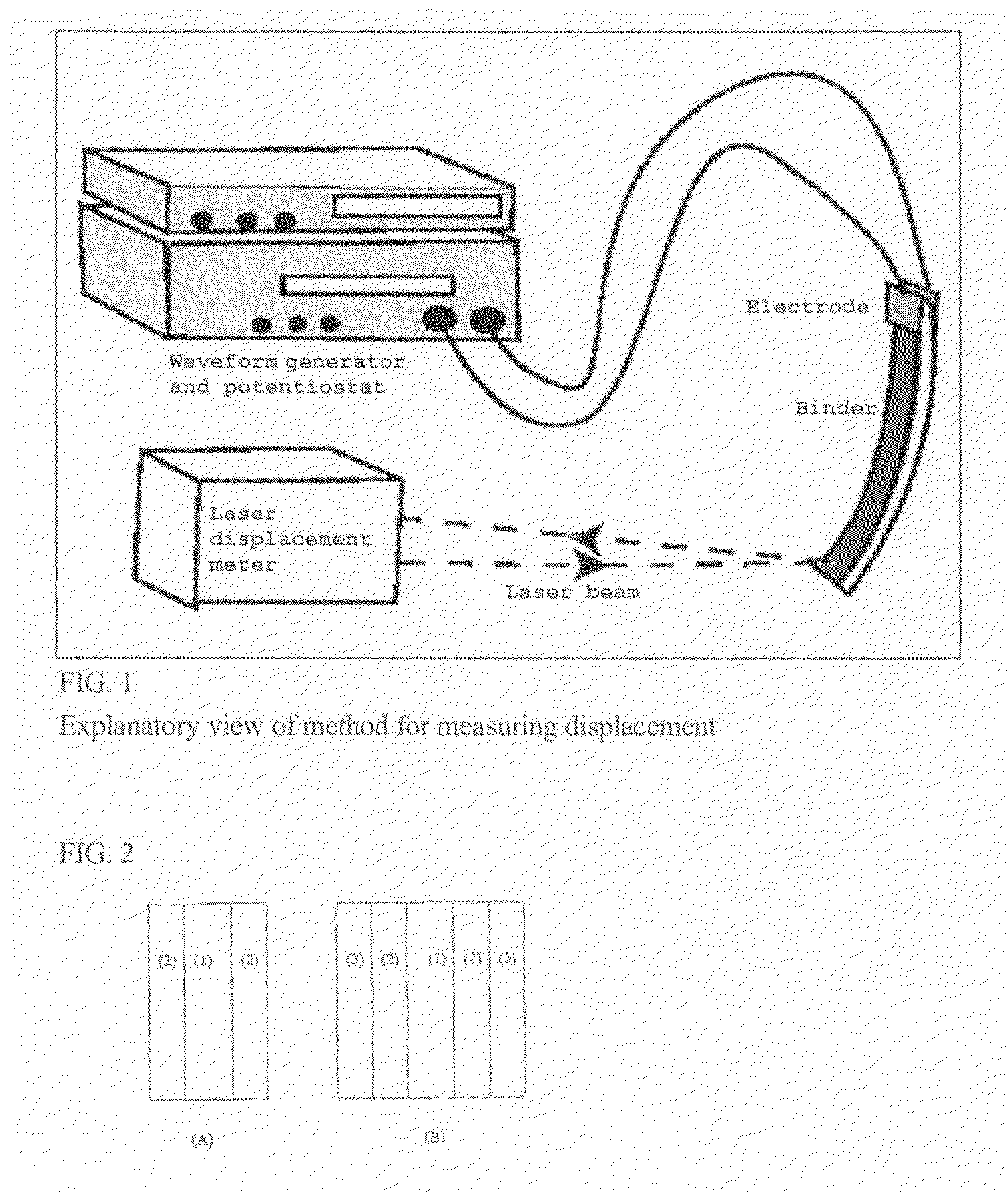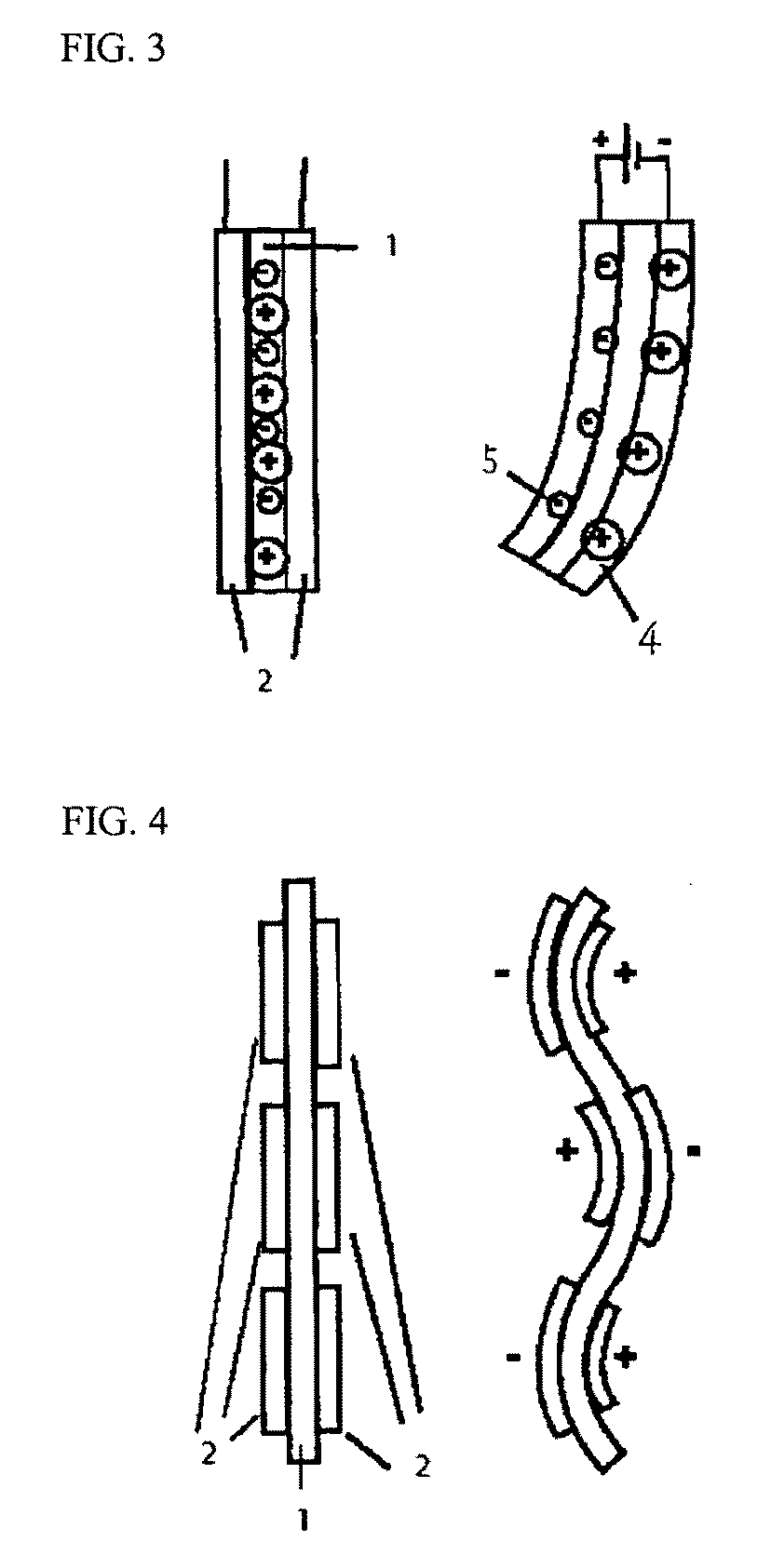Electrically conductive thin film formed from an ionic liquid and carbon nanotubes having a high aspect ratio, and actuator element comprising the thin film
a technology of carbon nanotubes and ionic liquid, which is applied in the direction of generators/motors, capacitors, coatings, etc., can solve the problems of difficult uniform mixing of polymers, ionic liquid, and actuators obtained cannot exhibit desired high performance, and prevent the uniform distribution of carbon nanotubes in the film. , to achieve the effect of improving the response speed, reducing the deformation of the element, and improving the electronic conductivity and ion conductivity
- Summary
- Abstract
- Description
- Claims
- Application Information
AI Technical Summary
Benefits of technology
Problems solved by technology
Method used
Image
Examples
example 1
[0087]LS-CNT (5 mg) and EMIBF4 (40 mg) were introduced into a bottle, 1 ml of DMAc as a solvent was added thereto, and the whole material was agitated for 1 hour using a magnetic stirrer. The resulting mixture was solidified to an extent that it did not flow even when the bottle was turned upside-down. It is assumed that the LS-CNT uniformly dispersed in the mixture to form a network and turned the mixture into a gel-like solid. The obtained solid was then irradiated with ultrasonic waves in an ultrasonic cleaner for 30 minutes, and 2 ml of DMAc was added thereto. Thereafter, it was agitated for 2 hours with a stirrer, and a liquid for casting was thereby obtained. A 2.4 ml quantity of the obtained casting liquid was poured into a 25 mm×25 mm cast frame made of PTFE (Teflon: registered trademark) tape. Each casting liquid in each cast frame was dried under reduced pressure at a temperature of 50° C. for 24 hours. Then, the temperature was adjusted to 80° C., and the cast product was...
example 2
[0089]LS-CNT (5 mg) and EMIBF4 (40 mg) were introduced into a bottle, 1 ml of DMAc as a solvent was added thereto, and the whole material was agitated for 1 hour using a magnetic stirrer. The resulting mixture was solidified to an extent that it did not flow even when the bottle was turned upside-down. It is assumed that the LS-CNT uniformly dispersed in the mixture to form a network and turned the mixture into a gel-like solid. The obtained solid was then irradiated with ultrasonic waves in an ultrasonic cleaner for 1 hour, and 2 ml of DMAc was added thereto. Thereafter, it was agitated for 2 hours with a stirrer, and a liquid for casting was thereby obtained. A 2.4 ml quantity of the obtained casting liquid was poured into a 25 mm×25 mm cast frame made of PTFE (Teflon: registered trademark) tape. Each casting liquid in each cast frame was dried under reduced pressure at a temperature of 50° C. for 24 hours. Then, the temperature was adjusted to 80° C., and the cast product was dri...
example 3
[0092]Each gel electrolyte layer produced in accordance with the common experimental procedure 3 was sandwiched between the two electrode films produced in Examples 1 and 2, respectively, and was pressed for 1 minute at 70° C. under a pressure of 1.9 N / mm2. Thereby, each electrode / electrolyte / electrode composite (actuator element) was obtained. Table 3 summarizes displacements observed when square wave voltages of ±2.5 V having various frequencies were applied across the electrodes. Even at a frequency of 5 Hz, a displacement of not less than 1 mm was observed. The result shows that the thus-obtained actuator element exhibits high-speed response.
[0093]
TABLE 3Displacement response of the element obtained in Example 3Voltage frequency (Hz)0.010.1125Electrode of2.081.801.231.100.94Example 1 (mm)Electrode of2.622.031.841.641.50Example 2 (mm)
(Thickness of each actuator element:[0094]the element comprising the electrodes of Example 1: 85 μm, and the element comprising the electrodes of Ex...
PUM
| Property | Measurement | Unit |
|---|---|---|
| aspect ratio | aaaaa | aaaaa |
| length | aaaaa | aaaaa |
| temperature | aaaaa | aaaaa |
Abstract
Description
Claims
Application Information
 Login to View More
Login to View More - R&D
- Intellectual Property
- Life Sciences
- Materials
- Tech Scout
- Unparalleled Data Quality
- Higher Quality Content
- 60% Fewer Hallucinations
Browse by: Latest US Patents, China's latest patents, Technical Efficacy Thesaurus, Application Domain, Technology Topic, Popular Technical Reports.
© 2025 PatSnap. All rights reserved.Legal|Privacy policy|Modern Slavery Act Transparency Statement|Sitemap|About US| Contact US: help@patsnap.com



